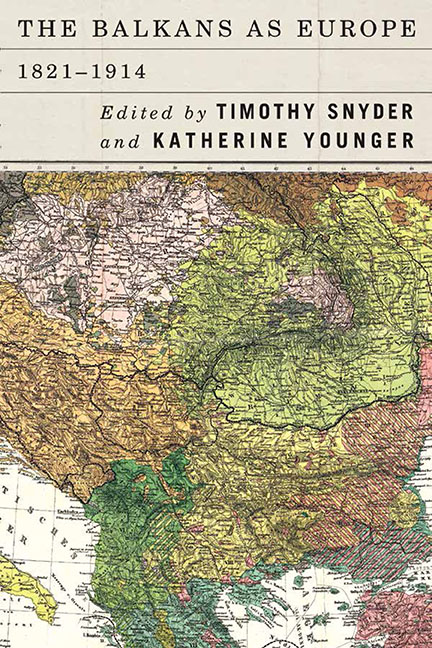Book contents
- Frontmatter
- Contents
- A Note on Terminology
- Maps
- Introduction
- 1 Balkan Initiatives to Make Europe: Two Cases from Mid-Nineteenth-Century Dalmatia
- 2 The Homeland as Terra Incognita: Geography and Bulgarian National Identity, 1830s–1870s
- 3 Liberation in Progress: Bulgarian Nationalism and Political Economy in a Balkan Perspective, 1878–1912
- 4 Emigrants and Countries of Origin: The Politics of Emigration in Southeastern Europe until the First World War
- 5 The Quiet Revolution: Consuls and the International System in the Nineteenth Century
- 6 The Hollow Crown: Civil and Military Relations during Serbia's “Golden Age,” 1903–1914
- List of Contributors
- Index
- Rochester Studies in East and Central Europe
1 - Balkan Initiatives to Make Europe: Two Cases from Mid-Nineteenth-Century Dalmatia
Published online by Cambridge University Press: 17 July 2019
- Frontmatter
- Contents
- A Note on Terminology
- Maps
- Introduction
- 1 Balkan Initiatives to Make Europe: Two Cases from Mid-Nineteenth-Century Dalmatia
- 2 The Homeland as Terra Incognita: Geography and Bulgarian National Identity, 1830s–1870s
- 3 Liberation in Progress: Bulgarian Nationalism and Political Economy in a Balkan Perspective, 1878–1912
- 4 Emigrants and Countries of Origin: The Politics of Emigration in Southeastern Europe until the First World War
- 5 The Quiet Revolution: Consuls and the International System in the Nineteenth Century
- 6 The Hollow Crown: Civil and Military Relations during Serbia's “Golden Age,” 1903–1914
- List of Contributors
- Index
- Rochester Studies in East and Central Europe
Summary
Over the last two centuries, historians have committed themselves to the task of defining Europe, of defining what it is and what made (or makes) it. Scholars have adopted various approaches, from longue duree models tracing environmental, philosophical, and religious factors, to courte duree models narrating military, diplomatic, and economic developments. What all of these histories share is a view that it was in Europe's power centers—Paris, Berlin, Amsterdam, Madrid, Vienna, Rome, and, yes, even London—that Europe originated. Constantine, Charlemagne, Napoleon, Marx, Metternich, Bismarck, Mazzini, and Monnet are just some of the usual figures who leap from the pages of treatises on the creation of a European order or a European consciousness. But were all the Euro-architects wielders of prestige? Were the centers of scientific innovation, religious hegemony, capital accumulation, or military might the preordained subjects in consolidating Europe's object peripheries into something grander, something European? My goal in this chapter is to show how the object of expansion, the periphery—in this case the Balkan periphery—could and did envision itself as a willing subject in making Europe, instead of just an object of the process. I do this through the example of two very different mid-nineteenth-century Dalmatian elites and their two very different plans for ways the Balkan maritime province of Dalmatia could serve as a model for Europeanization.
These elites saw Dalmatia not just as intrinsic to a Europeanizing project because the region connected western European commerce and intellectual movements through its eastern Adriatic caravan routes to the core Balkan lands that crossed over into the Black Sea and Eastern Mediterranean. They also saw Dalmatia as a microcosm of where much of the population diversity politics increasingly plaguing European communities was being played out. Dalmatia's population in the mid-nineteenth century counted about 5 percent who identified as Catholic Italian speakers (many of whom controlled local government and trade), 75 percent Catholic Slavic speakers, 20 percent Serb Orthodox Slavic speakers, with some influential micro-Sephardic Jewish and Albanian communities in some of its port towns. If Dalmatia could progress in its global outreach while peacefully negotiating its internal differences, should Europe not look to it as a useful test case for resolving similar issues throughout its many lands?
- Type
- Chapter
- Information
- The Balkans as Europe, 1821–1914 , pp. 11 - 30Publisher: Boydell & BrewerPrint publication year: 2018



